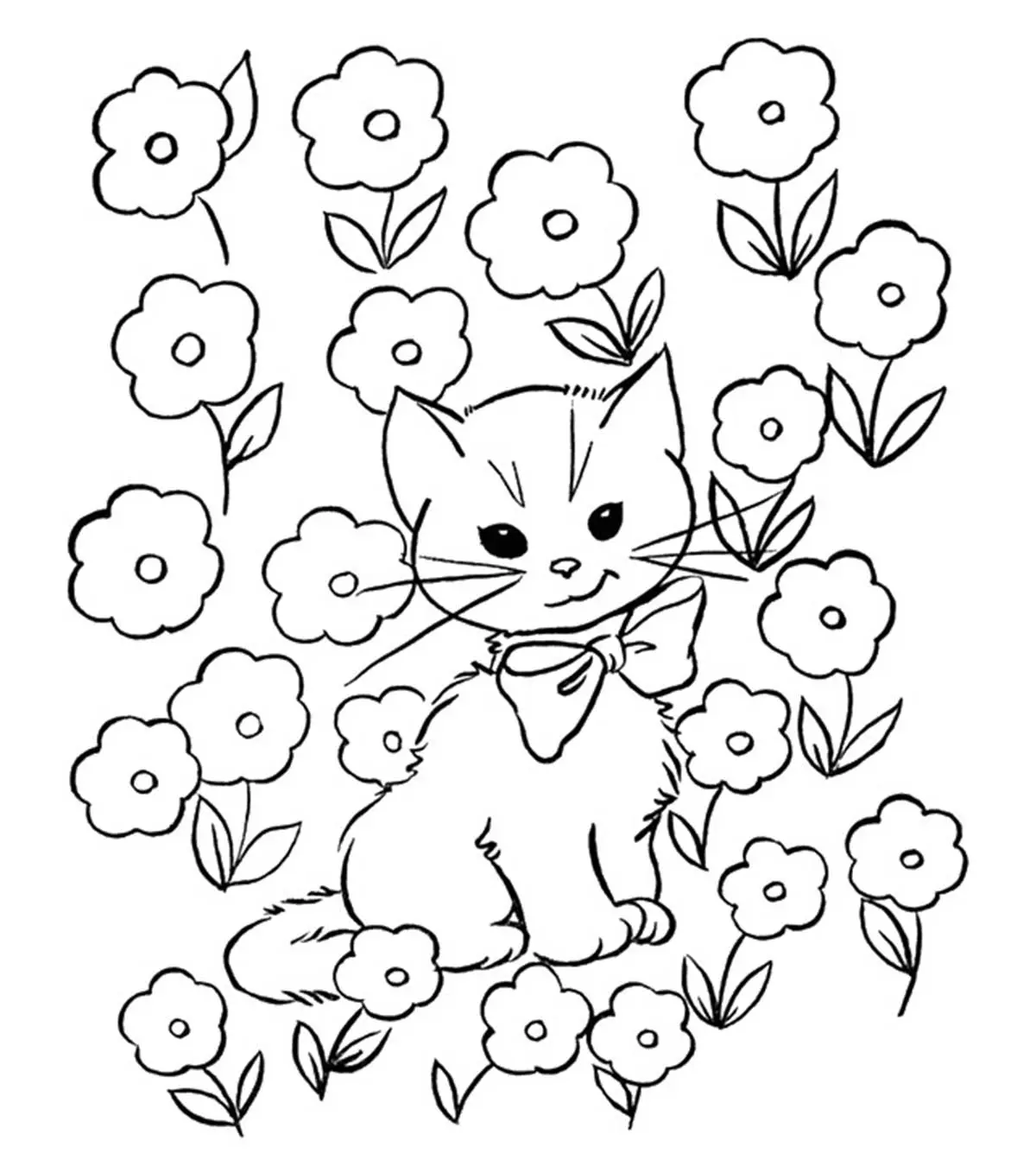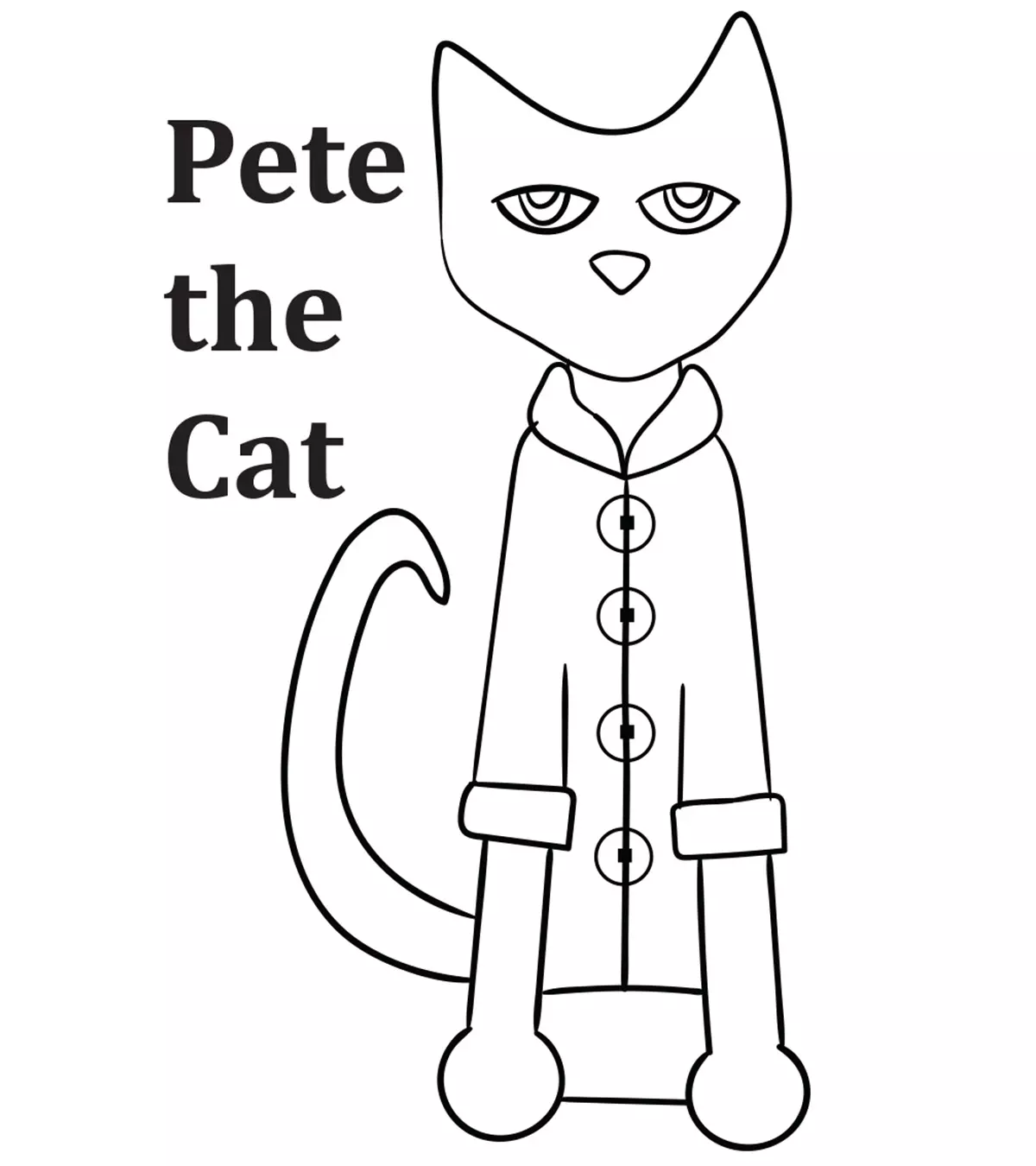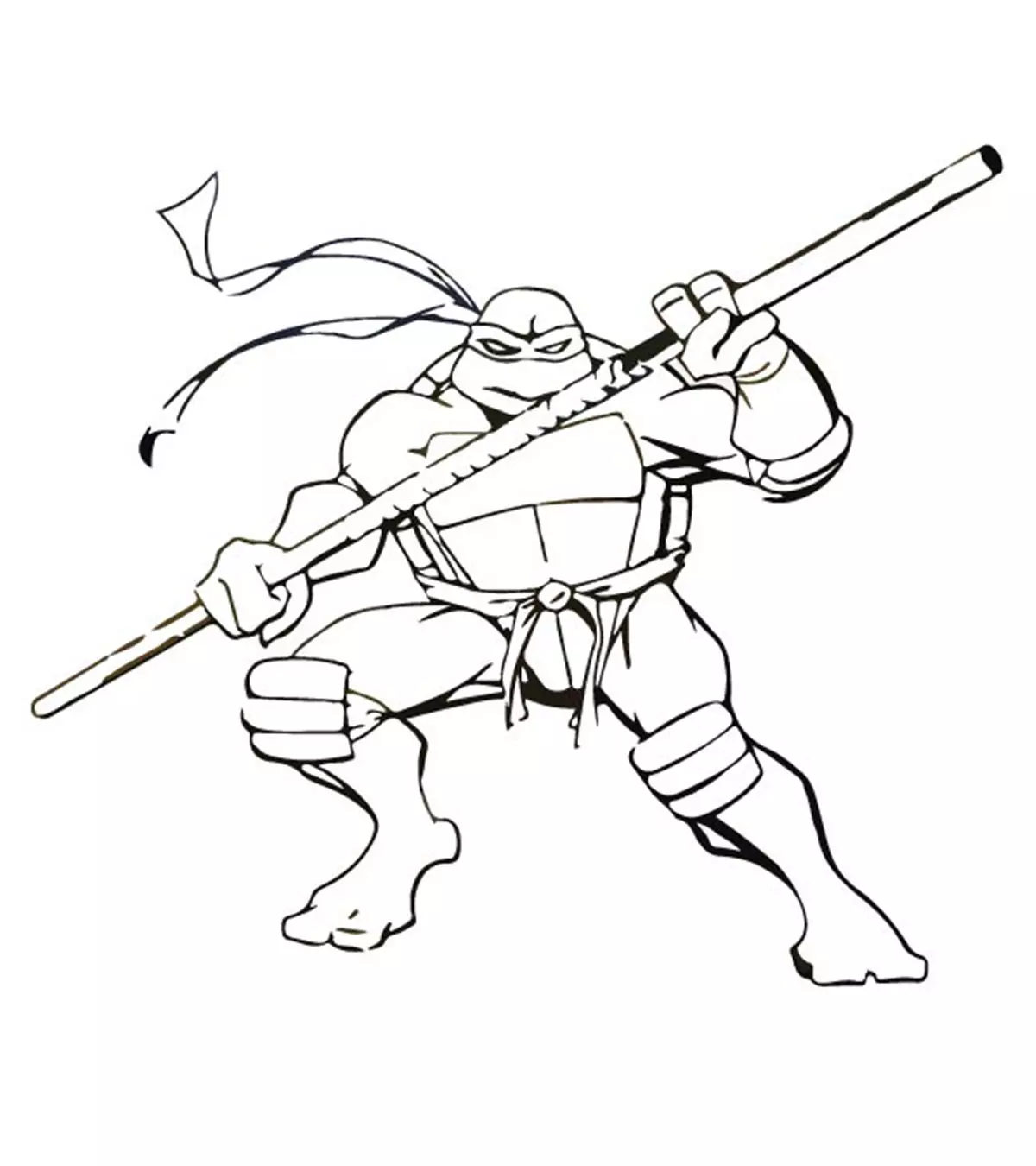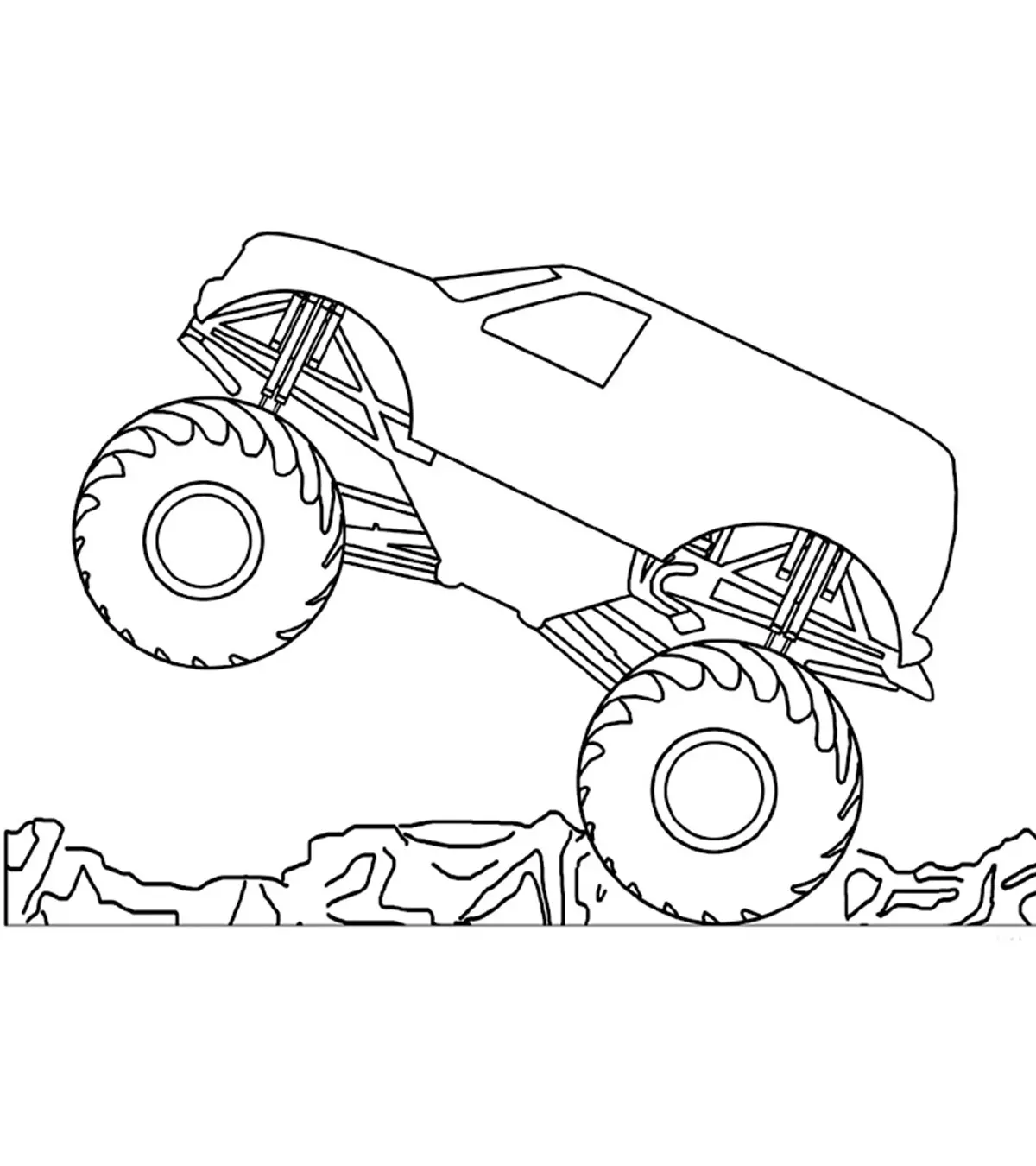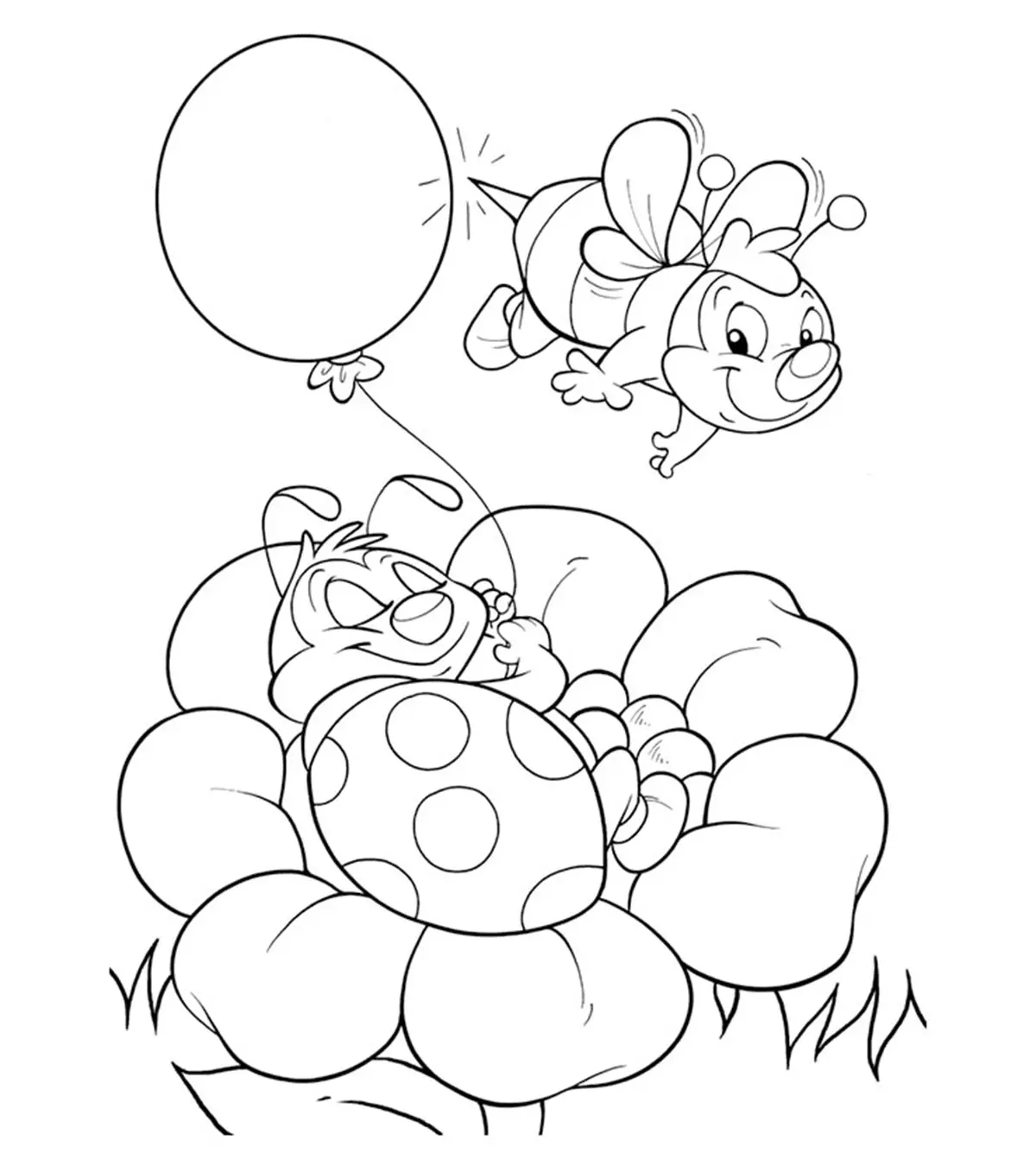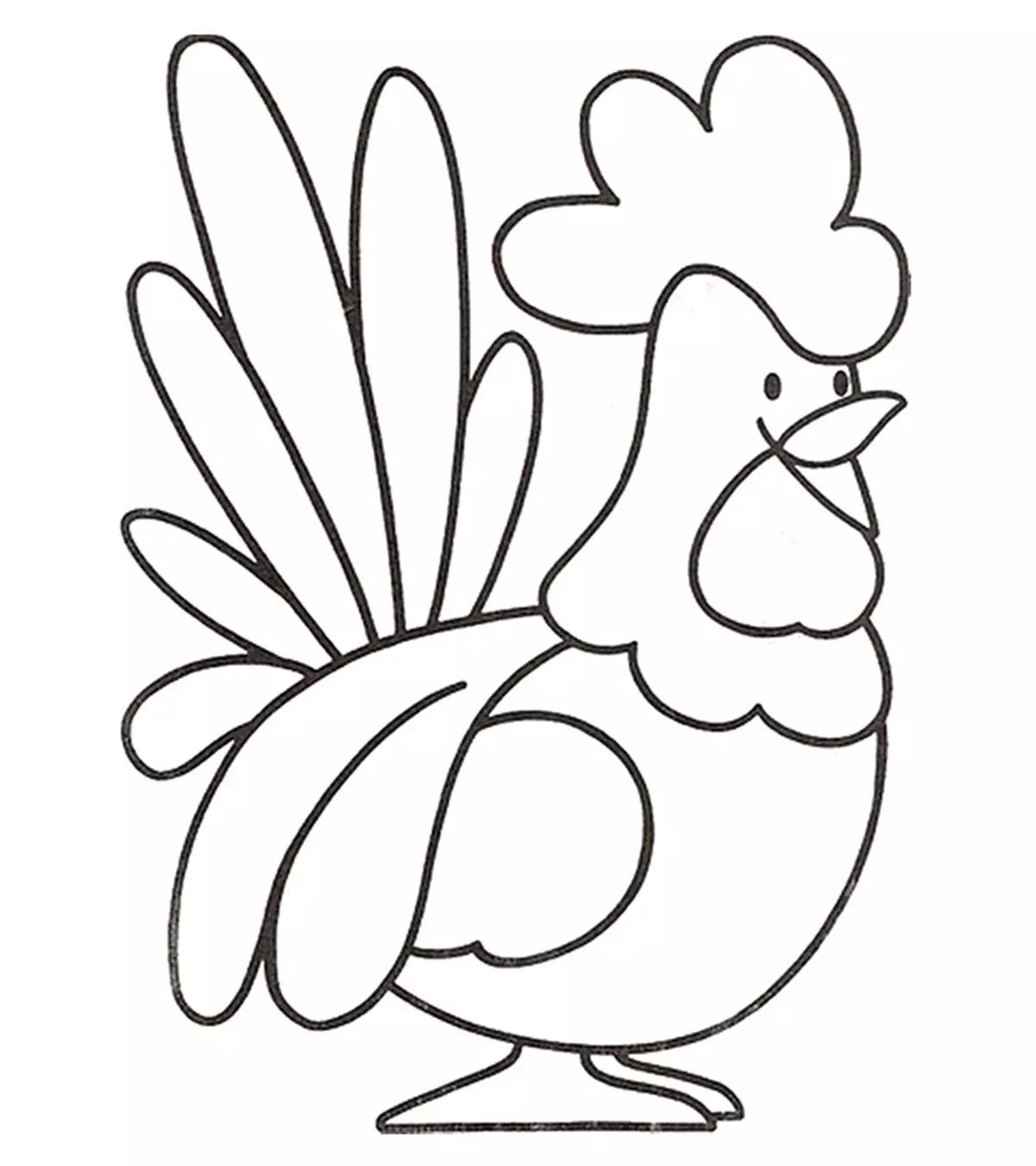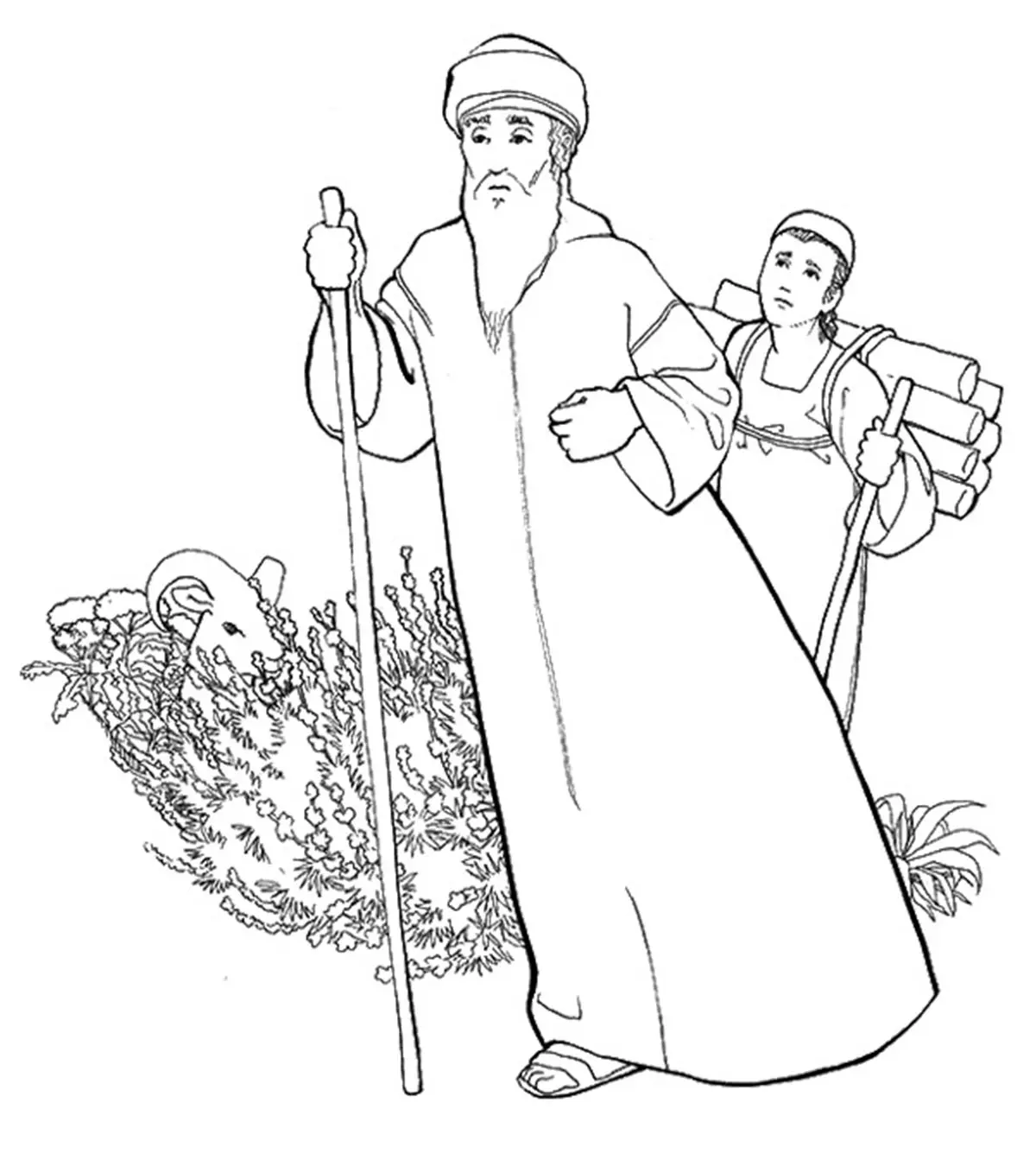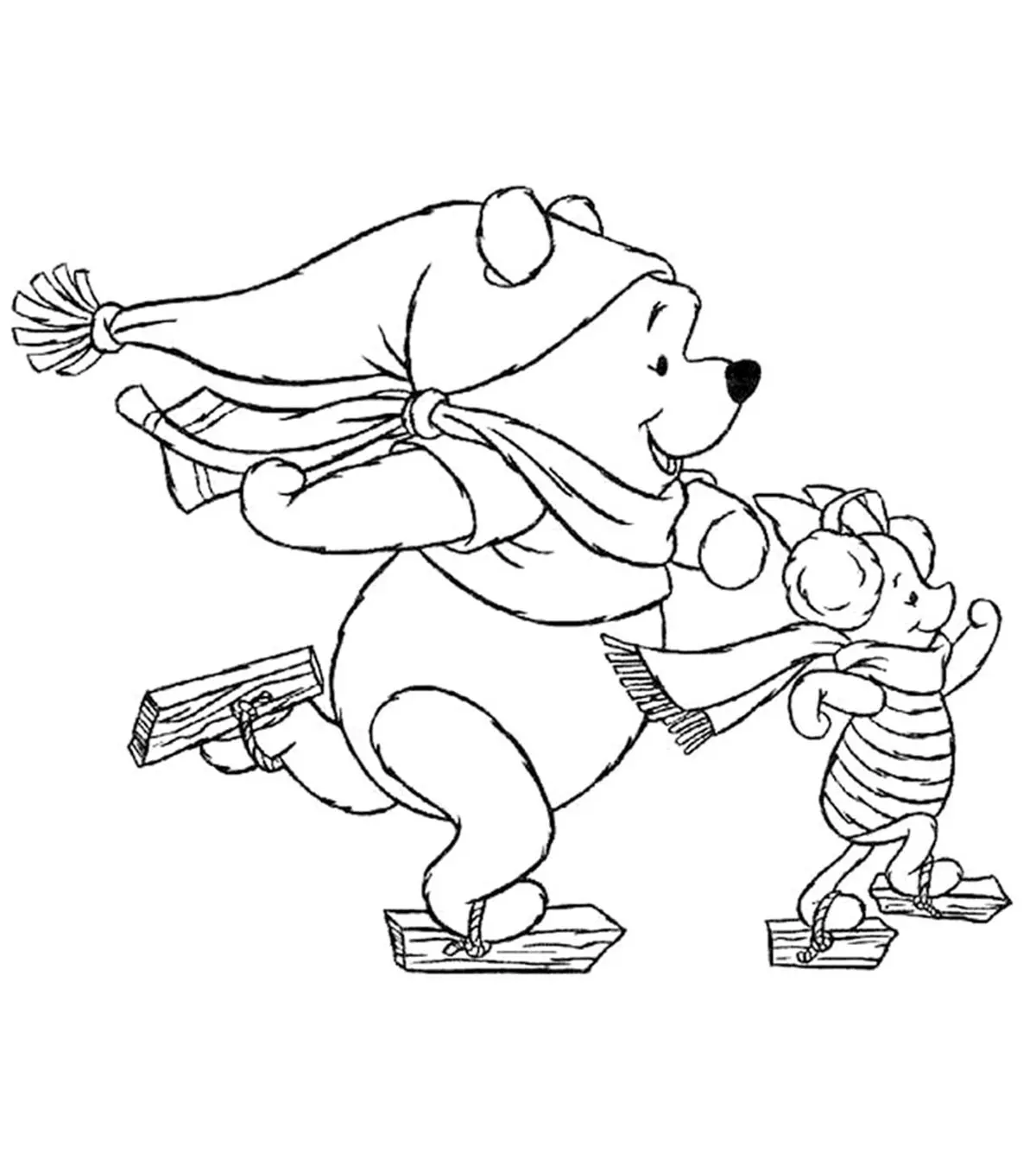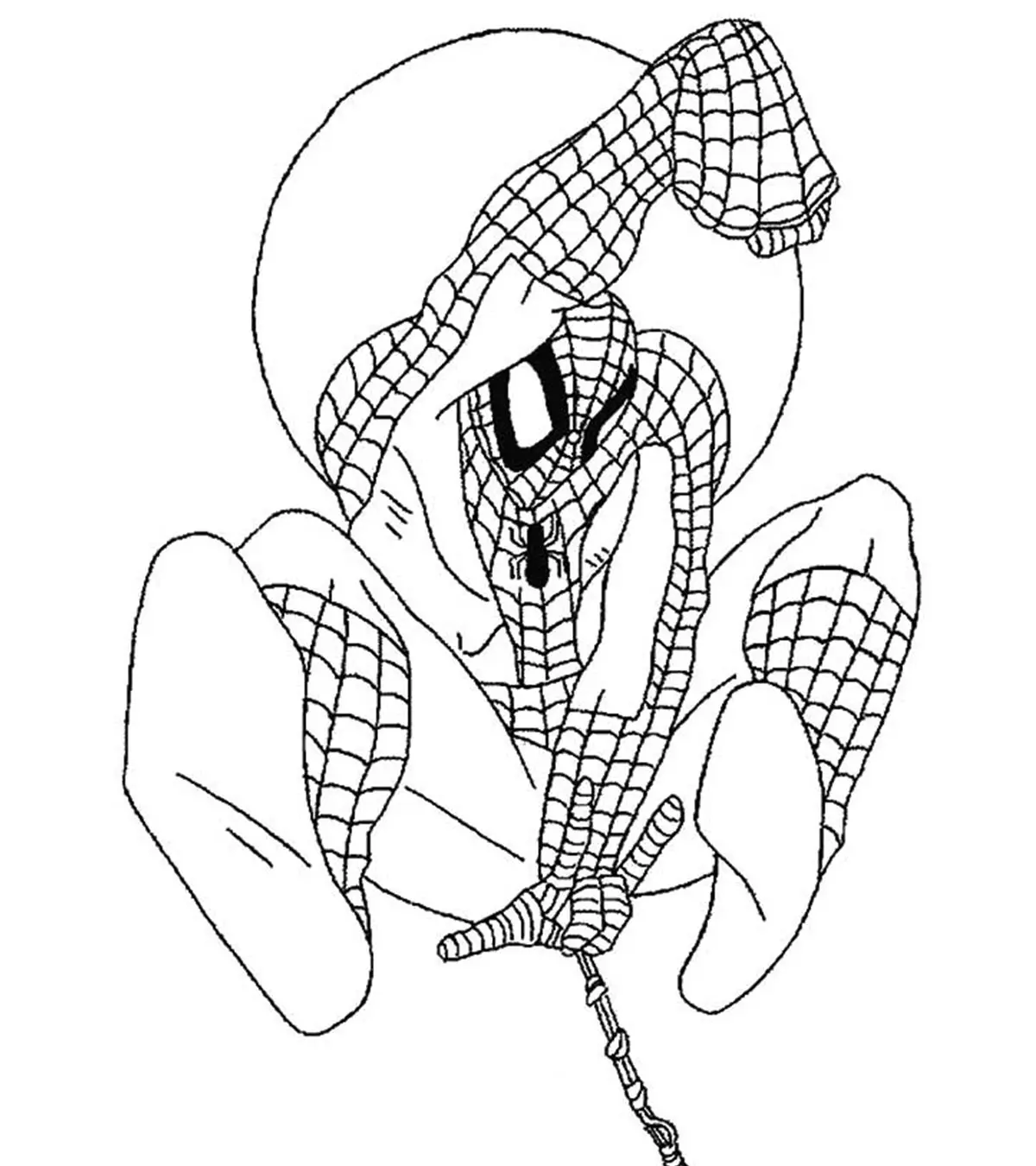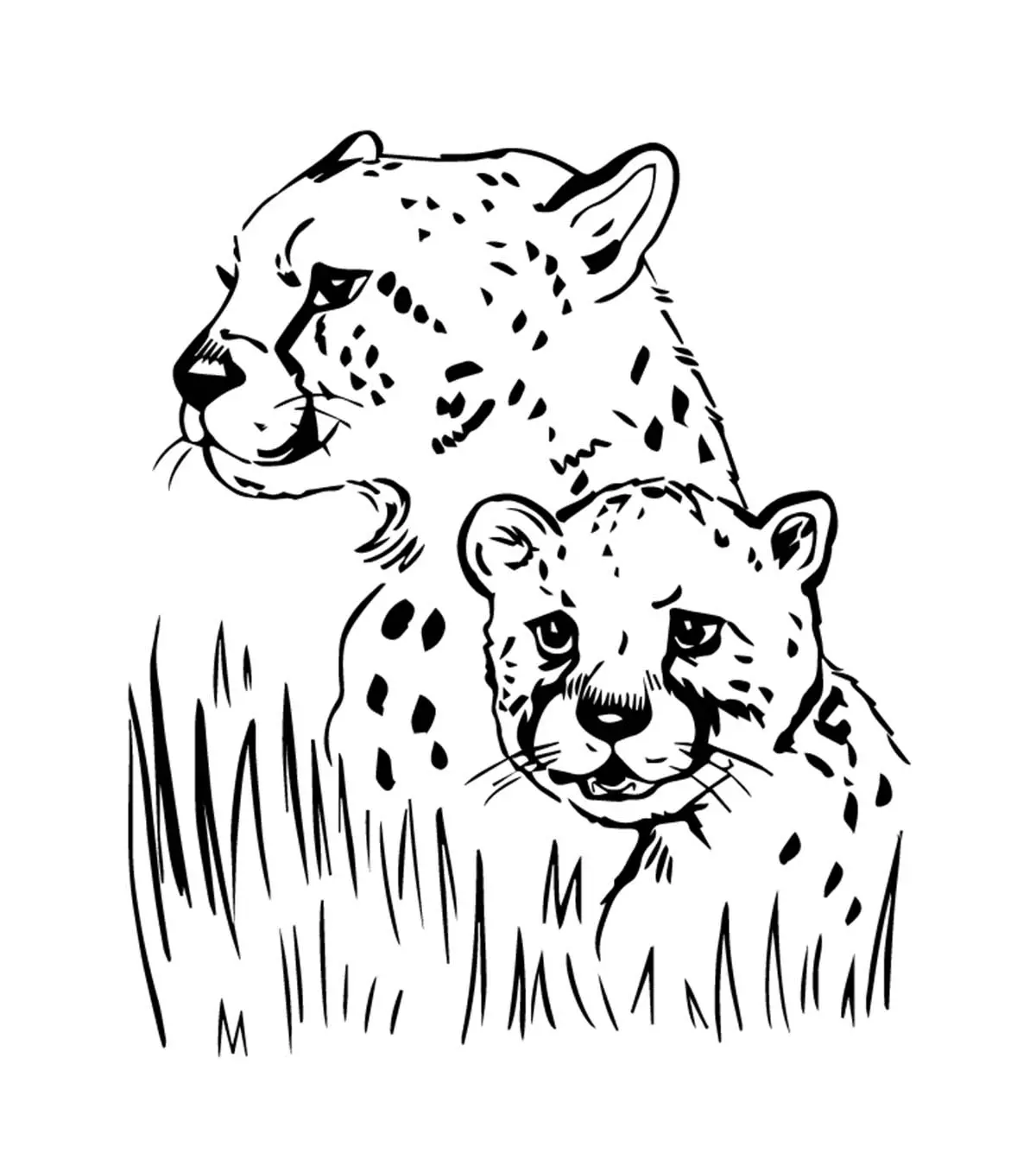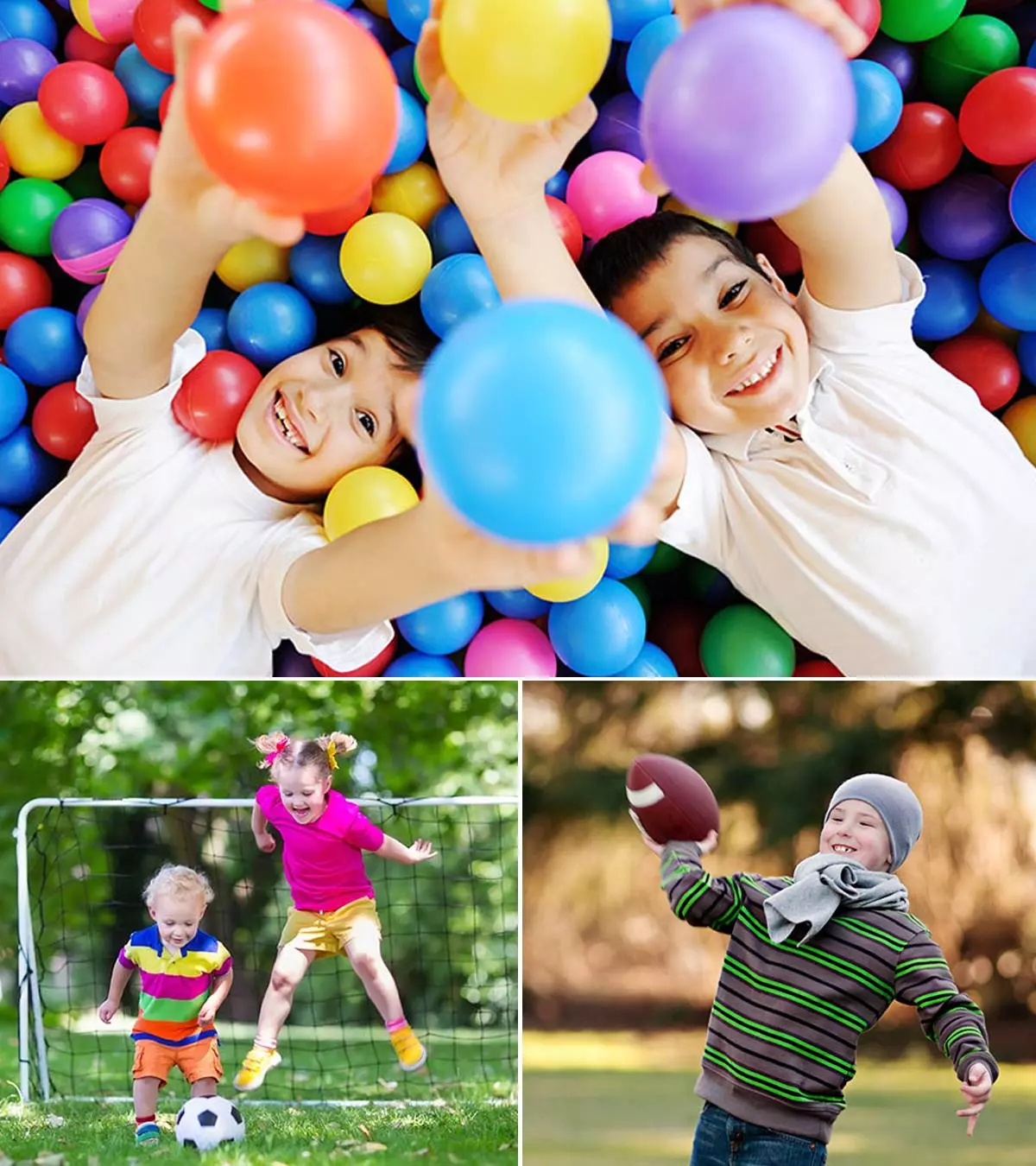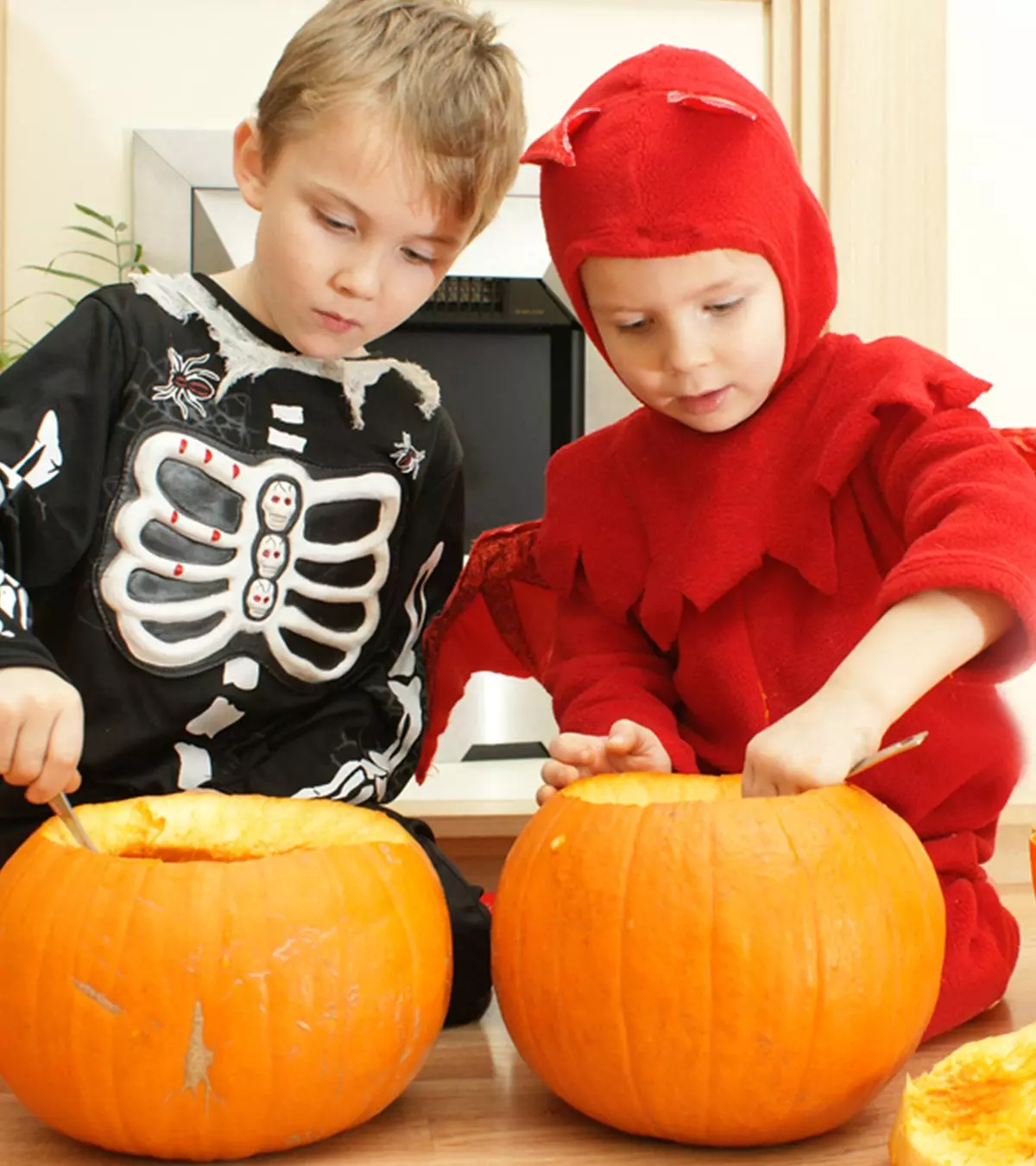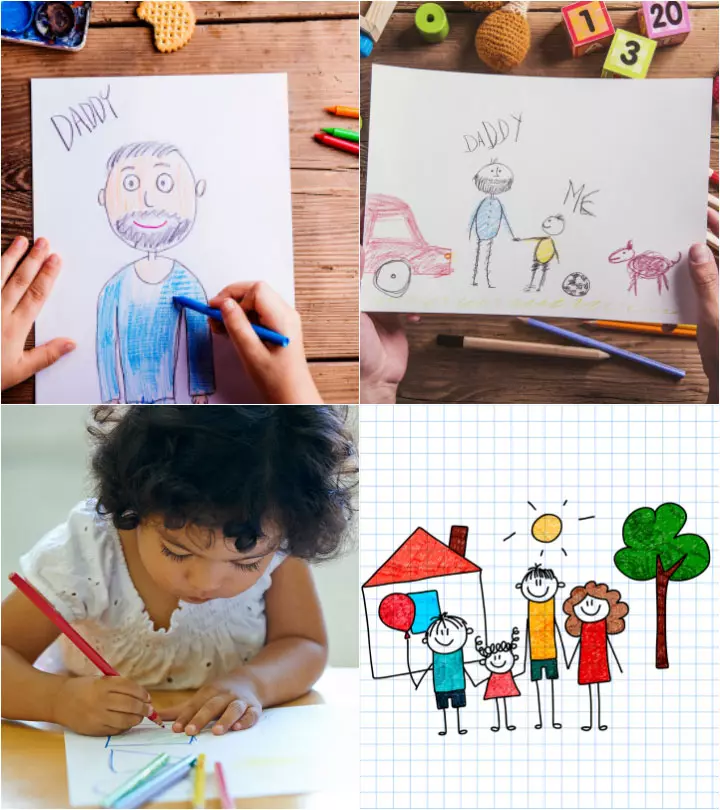
Image: MomJunction Design Team

Do you often wonder how to teach drawing to kids? Pablo Picasso once said- every child is an artist. Children are known to be creative, and art is a way to harness the potential of their creativity and channel it in the right way. Because art is such a vast idea, you may be unsure how to choose the niche for your little one. Understanding the same can be difficult, but we are here to help. If you want to discover your child’s artistic potential, we offer you some drawing ideas for kids and valuable techniques, tips, and tricks that you may consider. Continue reading to learn more.
Key Pointers
- Drawing is essential for children’s communication and emotional expression. It helps them develop motor skills, boost confidence, and foster imagination.
- Children should start with simple drawing ideas like shapes, stick figures, and everyday objects.
- Encourage children to draw from observation and imagination and discuss their drawings rather than criticizing.
The Perks Of Drawing For Kids
Drawing is the first language that a kid learns. Before they can read or write, children tend to draw anything that comes to their mind. They draw to communicate and express their feelings. That is why therapists use drawing to understand the kid’s emotional state (1).
There are many reasons why you should encourage your children to draw (2).
- It helps develop fine motor skills: When kids start to scribble, holding chalk, pencils, or crayons, they train their hand muscles for fine movements, which later help them to write.
- It improves hand-eye coordination: Drawing helps kids connect what they see with what they do, which not only improves their coordination but also their focusing abilities.
- It allows for self-expression: Kids learn to communicate with their artistry. They learn how to express themselves better through vocabulary when they speak their ideas out loud. Drawing as a communication tool is also especially useful for non-verbal kids.
- It boosts confidence: Drawing and illustrating activities boost the child’s confidence as they learn more complex shapes, coloring skills, and shading. It also helps them problem-solve when they try to figure out how to execute different elements of a drawing. Moreover, drawing and storytelling can improve a child’s confidence while helping them attain formal literacy goals (3).
- It helps regulate mood and emotions: Drawing can help a child regulate or change their mood (4). Drawing to distract themselves when upset can improve a child’s mood even when no instructions are given (5).
- It improves memory: Drawing helps children think about how they feel about an object, for instance, a beloved family pet or their favorite food item. Research also shows that children can remember an event better when they draw and talk about it simultaneously (6).
- It stimulates imagination and creativity: Drawing helps kids develop their creativity and imagination as they can draw whatever they want. It is also a good mindfulness activity, as it encourages kids to sit patiently and focus on a task (7).
- It encourages learning: Drawing can be used as a tool to understand a child’s level of understanding of concepts, give instruction, and motivate them to learn. Drawing, when used as a scaffolding tool, improves the interaction between teachers and children, which helps the learning process (8).
- It brings you closer to your child: Drawing can also be an effective bonding activity between parents and kids. Sit down with your kid and draw something together – you’ll know what we are talking about!
 Did you know?
Did you know?Basic Drawing Ideas For Kids
Children don’t need to be taught how to draw. What they need from parents and teachers is motivation to keep doing what they are good at. Kids may just draw lines or unshapely figures that make no sense to you. It may seem like scribbling to you, but when kids draw, they put 100% of their senses and emotions into it. It is a meaningful activity for them.
The right way to encourage kids to draw is to start with the basics of drawing.
- Start with simple drawing ideas like shapes – a circle, square or triangle. You could then try stick figures such as legs, arms, trunk, and head. Give the kids step-by-step drawing instructions in the beginning.
- Younger kids may need some prodding, but most of them can draw a person on their own.
- Other ideas to try with younger kids include drawing what they see every day making it an engaging and interactive activity.
When your kids are familiar with the basics of drawing, you can give them simple ideas so they can practice their new skills. These are some popular drawing topics:
- Fruits and vegetables
- Family (mom, dad, sister or brother)
- Teacher and friends
- Animals (especially pets)
- Nature (trees, clouds, river, stars, moon, sun, flowers)
- Buildings (home, school, post office, etc.)
- Objects (table, chair, fan, ball, pencil, bed, book, plate, tumbler, etc.)
Do not expect your kids to draw a masterpiece. And do not criticize or make fun of what they draw. Appreciate the effort they have put in and encourage them to try more – this boosts their confidence and makes them feel good about themselves.
Different Ways To Draw
Kids don’t need an easeliUpright support used for displaying artwork and presentation board or paints to draw. They are happy to draw anywhere and everywhere (yes, even on walls, doors, and tables) and with anything that they can lay their hands on. As they grow older, their art becomes disciplined. That is when you can get them to try different methods and techniques of drawing. Here are some techniques you can introduce them to:
- Crayon drawing/coloring: Your kid may already own a box of crayons. Give him a drawing book and let him unleash color into it! Crayons are usually ideal for coloring rather than drawing. The drawings will inspire him to be expressive and use vibrant colors.
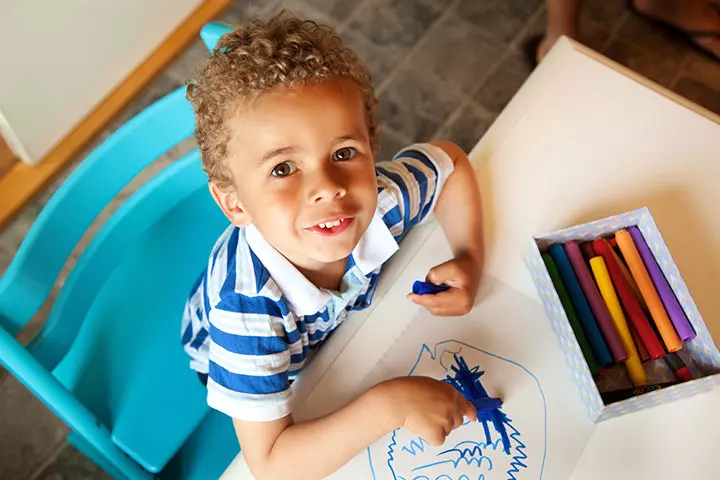
- Sketching: This method is used to create vivid, detailed images using a graphite pencil and paper. Sketch drawings are generally incomplete and in monochrome. Artists usually prefer graphite pencils, watercolors, pastels and charcoal for sketching.
- Chalkboard drawing: Another fun way to draw is using chalk. Drawing on a platform as big as the chalkboard can encourage kids to use their imagination when they draw.
- Shading: It is the art of creating images using just a pencil – this technique teaches kids how to control the pencil to create lighter and darker shades.
- Doodling: A fun form of drawing that is often done absentmindedly, without a specific purpose or goal. You’ll find a lot of these in their school books, on tissue papers, etc.
- Life drawing: This involves recreating what you see in the real world, on paper. It can be a simple scene at a park, home, school or a mall. Life drawing usually includes people with expressions or in action.
Kids who are good at drawing should also be encouraged to try emotive drawing (showing different emotions, times and moods), illustrations and oil painting.
 Quick tip
Quick tipHow To Teach Drawing To Kids?
You don’t need to be an artist to promote drawing development in children. You may or may not be able to draw well, but you can certainly help your kid learn how to draw with these few tips.
- Make it a routine: Kids can develop drawing skills through practice. There is no other way to do it. Make drawing a habit, a part of the daily routine. Encourage them to draw something, anything, for at least 20 minutes a day. They can draw at school or at home and begin by choosing some easy drawing for kids.
- Add a fun or challenging element: Make drawing a fun activity. Make it one of the activities you do with your child. Draw with them but do not show them how to draw step by step, as that can encourage them to imitate, without applying any thought.
- Promote observation: Encourage kids to observe something and then draw it. Start with something simple like a fruit or an object like a tumbler.
- Stimulate their imagination: Imagination is equally important for developing your child’s creativity. When they cannot always see what they want to draw, ask them to close their eyes and create a mental picture, which they can then draw on paper. This will lead to original, innovative, and unique works of art.
- Don’t enforce rules: Do not give them too many instructions on what to draw. At the initial learning stage, enforcing too many rules will take away your kids’ creativity and motivation and make them feel restricted. Once they develop a love for drawing, you can start giving them more detailed instructions.
- Encourage real-life inspiration: Let your kids’ memories serve as their source of inspiration. Ask them a question that triggers an image from the past – “Do you remember the time we saw the dolphins?” or “What did you see at the carnival?”
- Talk about art: The best way to get children excited about their drawing is to talk about it. Rather than passing judgment on their art, discuss it. Ask open-ended questions that allow them to articulate what their drawing stands for and what it means to them.
- Don’t criticize but motivate: Your child may not be the best artist around. Let your children make mistakes but do not criticize them. Encourage them to try again. Sometimes, a mistake may not be a mistake in art. It could just be another perspective.
- Give positive feedback: One of the most important things that you as a parent should know is to respond or react to a child’s drawings in the right way. Negative comments and corrections may be discouraging. Also, if you point out what is wrong without appreciating what is good, they will lose interest in it. Remember, the key is to be positive and playful.
- Help preserve their art: Encourage them to maintain a book or record of drawings. You could also frame a few and display them, to boost their confidence.
- Encourage sharing: Tell your kids to share their drawings with friends and family. Words of encouragement and praise from them will motivate your children to keep practicing and improving. It will also give them more confidence in their abilities.
- Don’t teach easy tricks: You should avoid showing your kids examples, tricks, and tips that make drawing really easy (9). This will prevent them from learning to observe, express, and invent.
 Quick fact
Quick factEasy Drawing Themes For Kids
Themes are simple drawing ideas that can make your little ones think. A single theme can generate hundreds of drawing ideas. These are a few basic themes that you can challenge your kids to base their drawings on.
- School: Your kids can draw anything that represents school, such as a classroom with the teacher teaching in the class and students taking notes, a lab with chemicals and test tubes, playground with swings and see-saws and so on.
- Family: Ask them to draw a family portrait, their parents, siblings and pets. For example, your child may draw the family holding hands and standing in front of the house.
- Universe: Kids can draw a starry sky, planets, and earth without a lot of effort. A simple drawing kids usually end up with is the moon and stars.
- Seasons: Rainy day, summer activities and games, my first snowfall, snowman, autumn leaves, etc. Some drawings under this theme could be images they see from their window, clouds and thunder, snowflakes, etc.
- Animals: Dog, cat, horse, cow, bird, and more. For example, a dog with a bone, a rat with cheese, or an owl on a tree branch.
- Buildings: Home, school, post office, or any other buildings that they see every day. These drawings could be simple blocks made from geometric shapes like a square, rectangle and a triangle.
- Modes of transportation: Car, bus, bicycle, ship or a motorcycle. A simple example of this could be a school bus or a train.
- Size, shape, and color: Draw something big, small, round, red, blue, yellow, etc. For example, if you tell the kid to draw something round, they could draw a ball, the moon or the earth.
Drawing contests come up with great ideas that can inspire your kids. Examples include world peace, environment, global warming, pollution, childhood, freedom, my dream, and life under water.
A theme does not pinpoint to one thing but allows a child to decide what to include and what not to. It also gives you an insight of their perspective in addition to the most whimsical creations.
Easy Drawing Prompts For Kids
Drawing is more fun than reading or writing. You don’t need to try hard to get your child to draw. But sometimes, they feel stuck. They may just not know what to draw. Telling them exactly what to draw or showing them a drawing is not going to fuel their imagination. But a prompt can. Here are a few creative drawing prompt ideas that can give your kid’s creativity the needed push.
- Superheroes: Superman, Batman, Spiderman or ask them to create their own superhero and name him or her after a round of brainstorming!
- Popular cartoon characters: Winnie the Pooh, Simba from The Lion King, Mr. Incredible, Minions, Phantom, He-Man, Mowgli, Tarzan and so on.
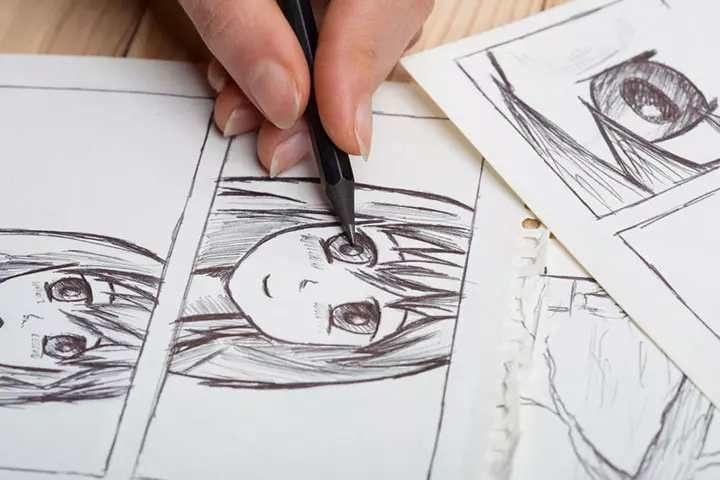
- Professions: Doctor, astronaut, actor, athlete, police officer, firefighter, teacher, banker, businessman or priest.
You can even prompt them to try sketching someone they know – family member, friend, relative, or neighbor.
Unique Drawing Prompts For Kids
The best prompts are those that force kids to use their imagination to conjure an image in their mind. Here are a few prompts that encourage kids to draw what they have never seen.
- A visitor from outer space
- A jelly bean tree – it is colorful and grows jelly beans!
- Something that breathes fire
- An anchor as it goes to the bottom of the ocean
- If it rained cats and dogs
- A bus-boat – bus that travels in water
- A silly animal
- How people will dress in the future
- Their older self / their parents as kids
- Their favorite story
- An animal clapping / laughing
- How the world looks from above
- A well-dressed carrot – carrot in tuxedo, evening gown or wearing a hat
- Broccoli fighting a donut
- An animal wearing a silly costume
- A new superhero with strange powers
- A scene from their favorite book
- Their dream house
- A new planet with weird aliens
These are just a few easy scenery drawings they can pick. Use your imagination to fuel their art!
You could also use printable drawing prompts that are incomplete drawings. Your child has to complete them using her imagination. You can also create simple ready-to-use prompts like a mirror frame, the blank cover page of a book, road, a garden with one tree, and more.
Drawing Projects For Kids During Vacation
Without activity, summertime can seem pretty long and tedious. We have compiled some cool drawing project ideas that kids can work on during vacation. Take a look at these creative ideas.
1. Zentangle patterns
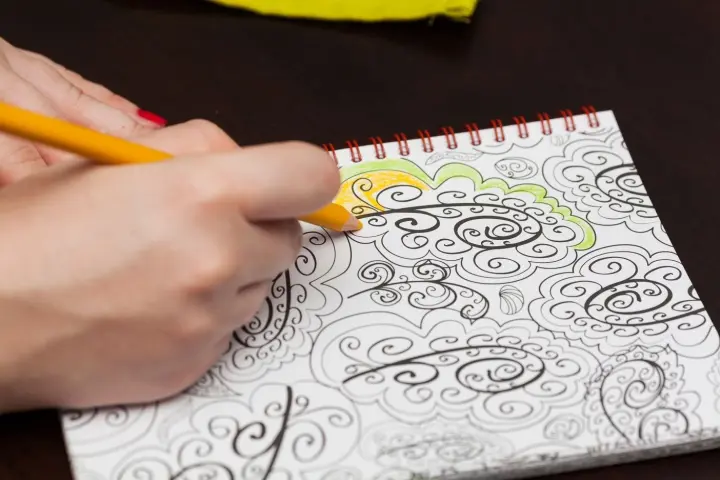
A ZentangleiA drawing method that involves creating structured and repetitive patterns in a defined area or shape teaches your kids to draw beautiful patterns in a structured and easy way. Give your child a Zentangle project and see how quickly he or she gets engrossed in it. It is also known to be a fun, relaxing and intuitive drawing method as it involves drawing using repetitive patterns.
2. Mirror makeovers
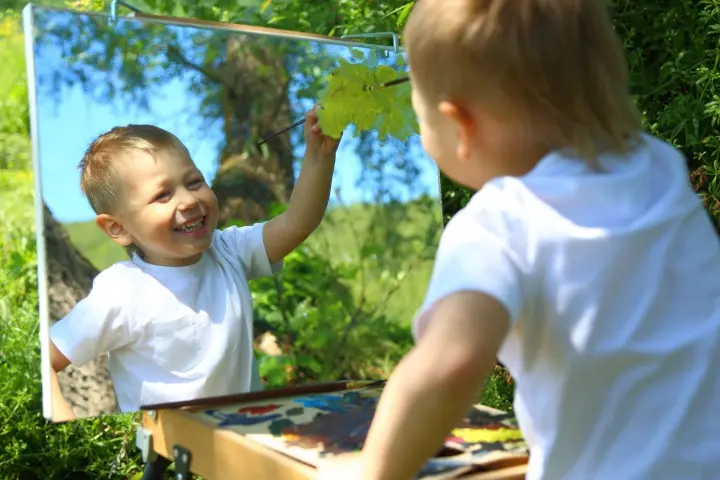
Mirror Makeovers is a fun drawing exercise that allows kids to give themselves a makeover, without changing a thing about them! You will need a full-length mirror, washable watercolors or paints (you could use shaving foam too – that’s more fun) and a few props for ideas. Let the kids stand in front of the mirror and tell them they can be anyone they want. Give them a paintbrush and see what fun they’ll have! This drawing activity is great for giving flight to your kids’ imagination and creativity.
3. Drawing on cloth
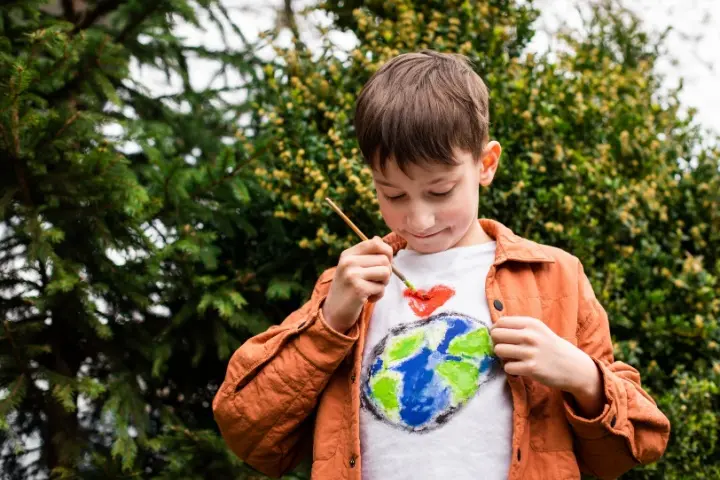
Children get bored easily. If drawing on paper is no more exciting, change the medium. Use a cloth instead – fabric drawing can be challenging and appeals to the artist in the kid. It keeps them focused and also gives them a sense of achievement. If you have old T-shirts (plain white or light colored), jeans or pieces of cloth you have no intention of using again, let your child use them as their canvas.
4. Draw on chalkboard
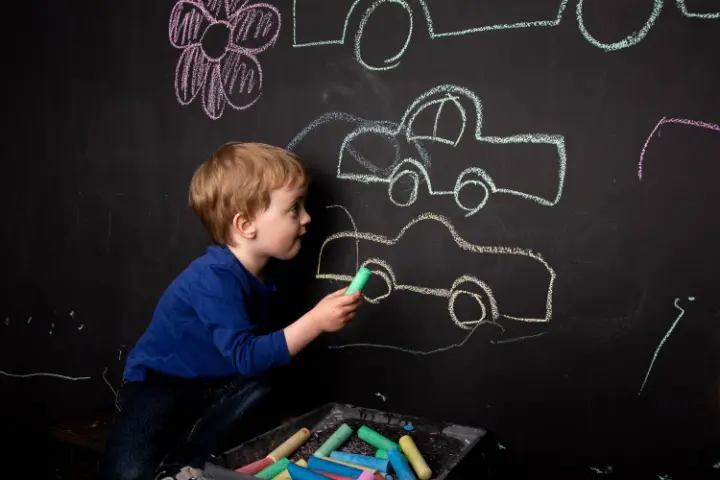
Kids love to experiment and explore. If you have a chalkboard, encourage the kids to draw something on it. If you don’t have a board, they could use the driveway or another concrete surface as their canvas. Give them space and a few pieces of chalk and see what they can draw. Chalkboard drawing is a great way to improve fine motor skills in young kids as they improve their dexterity, hand-eye coordination, and muscle memory.
5. Draw cutouts

What if your children could use their drawings? Sounds like fun, doesn’t it? A fun way to use their drawing skills is to make colorful cut-outs like masks, flags, shields and more. Encourage them to get creative by making monster masks, animal masks, space helmets and what not! Cutout-making also helps in developing their motor skills.
6. Draw on balloon
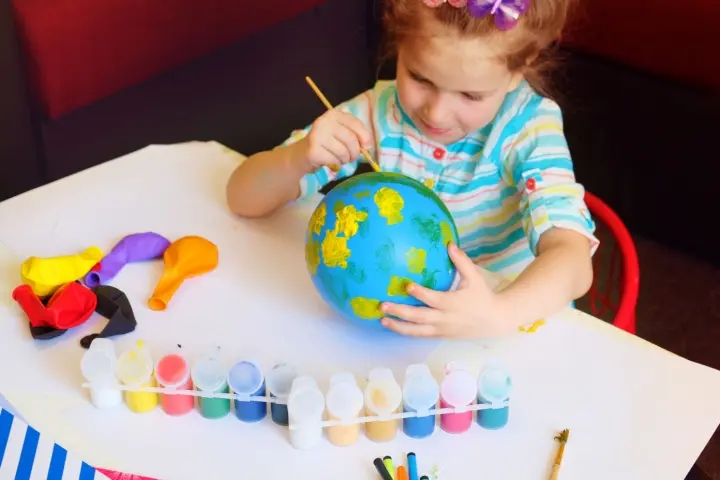
Drawing on hard surfaces is easy. But can your kids draw on something as delicate as a balloon? Drawing on a balloon, without breaking it, takes skill that can be developed by practice. It can help them develop their fine motor skills by figuring how much pressure they can exert on the pen without popping the balloon. Balloon drawing can also be a fun activity for kids at a party.
7. Scribble drawings

Give a toddler a pen and paper, and he’ll start scribbling instantly. If your child scribbles, you can help them make art out of it. They can fill color in the spaces or draw faces (eyes, nose, and mouth) in the empty spaces surrounded by scribbled lines. Scribbling is also an important developmental milestone, as it signals their first steps toward learning how to write (10).
Fun Drawing Games And Activities
Some children feel inferior about their ability to draw and shy away from it. They will just not draw, no matter how many prompts, crayons or coloring kits you give them. How do you make drawing fun and enjoyable for them? How do you get them to try drawing? These drawing exercises, games, and activities can work for children.
- Pictionary: This drawing game involves sketching a prompt within a set time limit. Even when not playing competitively, you can implement this game in your daily routine. For instance, if your kid wants to say something, ask them to express it through pictures.
- Blind-fold drawing: This is a fun way to let kids draw what comes to their mind without judging the output. Blindfold your kid and give them a prompt. Let them rely on their imagination, memory, and tactile senses to draw.
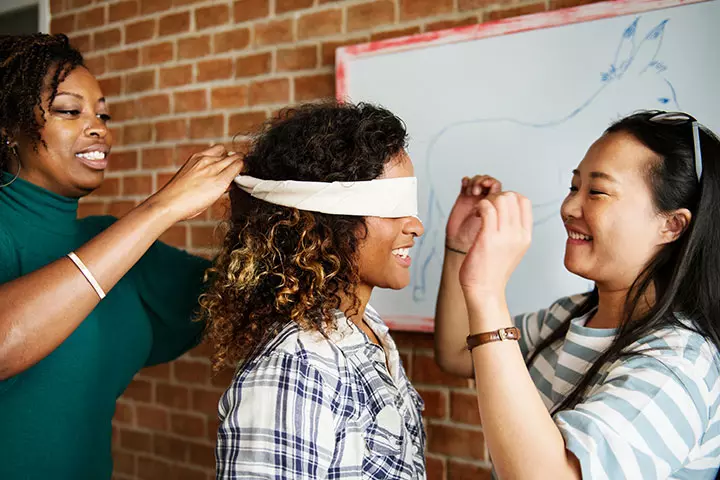
- Quiet drawing: It is a fun game to play with a group. Give every kid a paper and pencil and let them take turns to call out what to draw. Everyone draws the same thing on paper and shows off their skills in the end.
- Simon says, draw: A fun variation of the classic “Simon says” game, here, your kids have to draw what Simon says. Let the kids take turns to be Simon.
- Follow the leader: This game is about following the leader, your child. Take two sheets of paper, one for you and one for your child. Draw what your kid draws on their sheet – to the T. The activity is fun and also motivates kids to draw anything, to see if you’ll draw the same!
- Easy mazes: In this fun drawing game, make dots on the paper and ask your kid to use them to create a maze. The maze should have an entry and an exit.
- Back and forth: This drawing game is a lot of fun. Take one sheet of paper and take turns to draw something together with your child. For example, you start with a box, they may add a window, and then you add a window, and they add a door knob.
Frequently Asked Questions
1. How do children learn to draw?
It is optional to teach children how to draw formally. However, providing them with access to drawing materials and allowing them to express themselves freely is an effective way to help them learn. As children grow and develop, their drawings will become more sophisticated and accurately depict the world around them (11).
2. At what age can a child start drawing?
Children may start to draw at 15 months old and go through four stages of drawing development until five years old. These stages include random scribbling, creating lines and patterns, drawing recognizable objects/people, and improving their skills to create detailed and realistic pictures (12).
3. How do I know if my child is good at drawing?
There are several ways to determine if a child has a natural talent for drawing: showing interest in art and drawing, having attention to detail in their artwork, showing improvement over time, and expressing themselves creatively through art.
4. What kind of drawing materials do kids need?
To get your kid started with drawing, provide them with basic paper, pencils, erasers, and crayons. You can help them get more creative with colored pencils and watercolor once they get the hang of drawing.
Drawing offers several benefits for children, including improved motor and creative skills. It is a hobby that can help them release stress productively when they grow older. You can start your child’s drawing journey by encouraging them to scribble. You can also explore finger painting ideas for kids. Further, you can use these drawing ideas for kids to help them tap into their creative side. In addition, introduce them to different drawing techniques based on their expertise and interests. These ideas will open up new horizons for children who already love drawing. Alternatively, for those who are not too keen, these concepts may help them see this art form from a different perspective.
Infographic: Tips For Improving A Child’s Drawing Skills
If you notice that your child is enthusiastic about drawing and draws well, you may try different ways to improve their drawing. This will further boost the child’s interest in drawing, making them even better at it. Check out this infographic to learn some useful suggestions for assisting your child in becoming a better artist. Illustration: Momjunction Design Team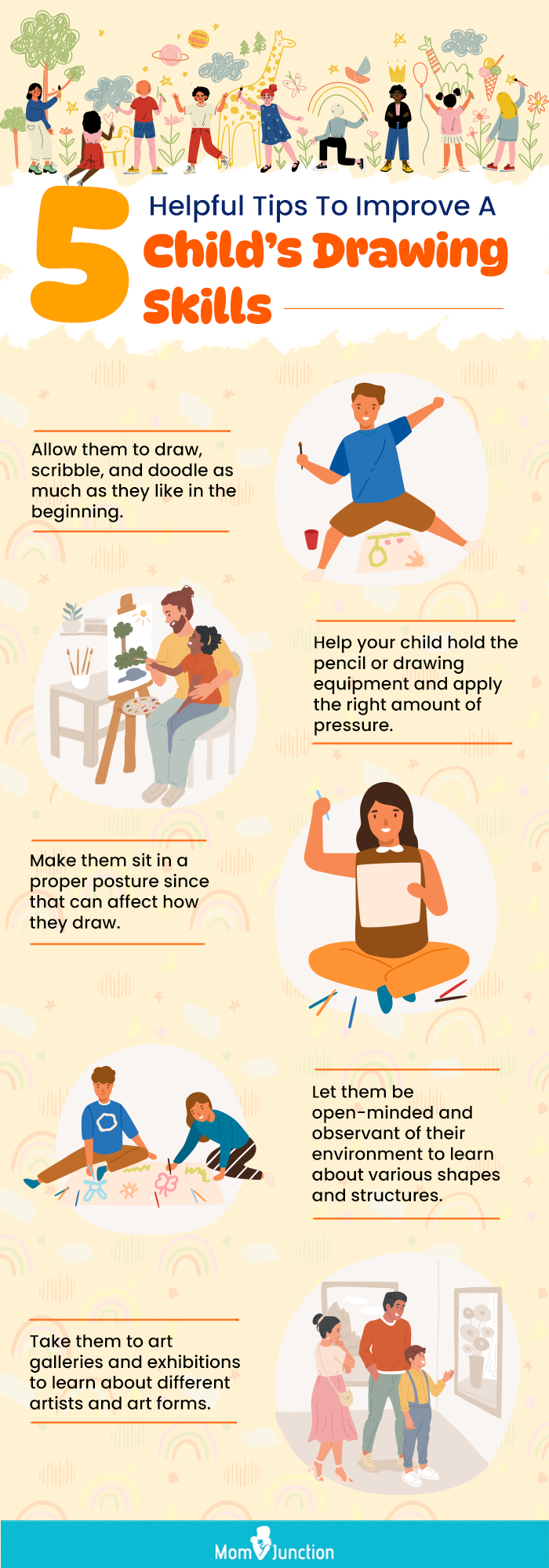
Illustration: Basic Drawing Ideas For Kids To Try
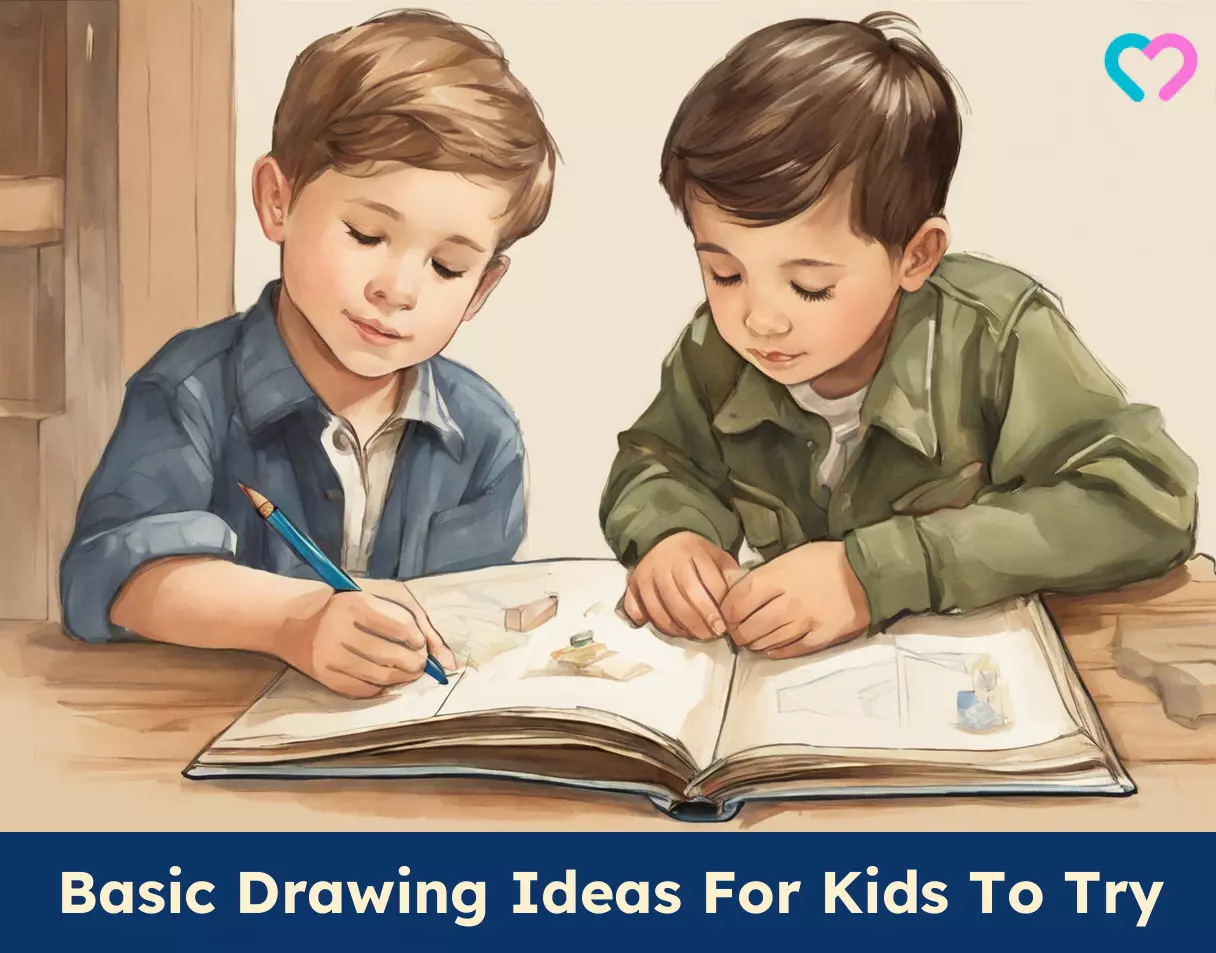
Image: Stable Diffusion/MomJunction Design Team
Tap into your child’s artistic potential with the fun and imaginative drawing hacks! From DIY stencils to fun shading tricks, watch as creativity comes to life in this playful video for your little ones.
References
- Junie Woolford et al.; (2013); Drawing helps children to talk about their presenting problems during a mental health assessment.
https://pubmed.ncbi.nlm.nih.gov/23904178/ - The Importance Of Drawing In Children’s Development.
https://lovepaper.org/the-importance-of-drawing-in-childrens-development/ - Improving children literacy through drawing.
https://research.csu.edu.au/research-at-charles-sturt/faculty-based-research/improving-children-literacy-through-drawing - The latest research on creativity and the arts.
https://www.apa.org/monitor/2014/06/arts-creativity - Jennifer E. Drake; (2025); How Drawing to Distract Improves Mood in Children.
https://www.frontiersin.org/journals/psychology/articles/10.3389/fpsyg.2025.622927/full - Mikaela Magnusson et al.; (2025); The effects of drawing on preschoolers’ statements about experienced and non-experienced events.
https://onlinelibrary.wiley.com/doi/full/10.1002/acp.3772 - The Benefits of Drawing for Children.
https://edgeearlylearning.com.au/the-benefits-of-drawing-for-children/ - Ni Chang; (2012); The Role of Drawing in Young Children’s Construction of Science Concepts.
https://www.researchgate.net/publication/257556930_The_Role_of_Drawing_in_Young_Children’s_Construction_of_Science_Concepts - Motivating Non-Drawing Students.
https://www.goshen.edu/art/ed/talent.html#methods - Scribbles have meaning.
https://extension.psu.edu/programs/betterkidcare/early-care/tip-pages/all/scribbles-have-meaning - The Stages of Drawing Development Reference Guide.
https://theartofeducation.edu/wp-content/uploads/2015/07/The-Stages-of-Drawing-Reference-Guide.pdf - Learning to Write and Draw.
https://www.zerotothree.org/resource/distillation/learning-to-write-and-draw/
Community Experiences
Join the conversation and become a part of our nurturing community! Share your stories, experiences, and insights to connect with fellow parents.
Read full bio of Erin DeCarlo
Read full bio of Harshita Makvana
Read full bio of Deepa Thomas
Read full bio of Kavita Kankani






